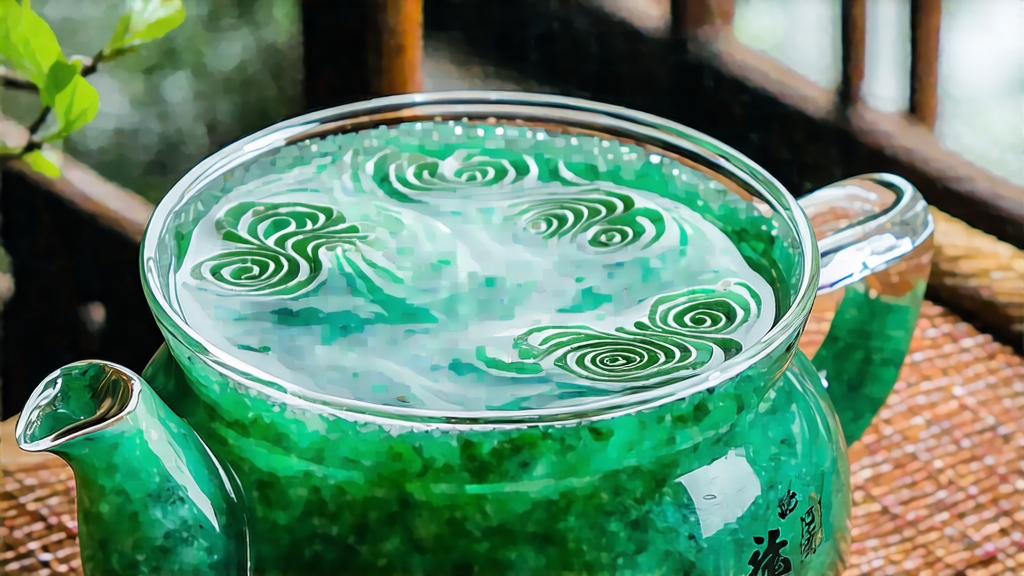
Biluochun, whose name translates literally to “Green Snail Spring,” is one of China’s ten most celebrated teas, yet it remains a quiet jewel outside specialist circles. Produced only in a narrow micro-zone around Dongting Mountain in Jiangsu Province, this tea carries within its tiny, tightly spiraled leaves the cool mists of Lake Tai, the perfume of nearby fruit orchards, and six centuries of imperial lore. To understand Biluochun is to listen to a spring breeze compressed into a single curl, then released, sip by sip, in a clear glass.
Historical whispers place the tea’s birth during the late Yuan dynasty, when a monk noticed wild tea shoots perfumed by surrounding peach, plum and apricot trees. Locals began calling the infusion “Xia Sha Ren Xiang”—“scary fragrance”—because its aroma was almost too seductive. The Kangxi Emperor, touring the south in 1699, renamed it Biluochun to honor its shape and season, elevating it to tribute status. For three centuries the leaves travelled in silk-lined crates to the Forbidden City, wrapped in lotus leaves to preserve their bouquet.
Unlike broad-leaf green teas, Biluochun relies on the smallest, most tender buds of the Dongting Xiao Ye cultivar, a landrace that evolved on the lake’s fog-shrouded cliffs. Growers recognize three contiguous terroirs: the original Dongshan (East Mountain) orchards, the slightly higher Xishan (West Mountain) terraces, and the newer foothill extensions. Only the first flush before Qingming—about fifteen days in late March—qualifies for the prized “Mingqian” grade, when one kilogram demands 70,000 buds, each plucked before sunrise to keep dew-closed cells intact.
The crafting choreography begins the moment baskets reach the village courtyard. Leaves are scattered on bamboo trays set under the morning shade; three hours of withering softens cell walls without sunburn. A wok heated to 180 °C receives 250 grams at a time; the tea master’s wrist flicks the leaves against the iron, killing green enzymes in ninety seconds while coaxing moisture to the surface. Immediately the temperature drops to 80 °C and the true art begins: simultaneous rolling and spiraling. Palms press, fingers coil, thumbs tuck—every motion must mold the leaf into a tight spring without breaking its tip. After ten minutes the curls are flung back onto trays, cooled, then re-wok fired at 60 °C for a final polish. The entire cycle repeats three times, shrinking original volume by 75 % and locking in a downy silver-green sheen. When finished, a single gram contains roughly sixty tiny snails, each no larger than a housefly.
Water choice is paramount. Lake Tai’s own spring water, low in calcium and rich in silicates, is hauled uphill in cedar barrels for competitions. Abroad, a low-mineral alpine bottled water at 7 °C hardness or less is acceptable. Heat to 75 °C—never hotter—or the leaf blanches, turning liquor grassy. A three-gram dose suits a 200 ml glass teapot; the transparency allows foreigners to witness the “three-stage dance.” First pour: curls hover, then sink like miniature submarines. Second pour: silver tips rise vertically, a bamboo forest in slow motion. Third pour: leaves unfurl completely, revealing the intact single-bud-and-leaf pluck that certifies authenticity.
Timing follows the “seven-minute rule.” After the initial 30-second rinse to awaken the leaf, subsequent steeps extend by 20-second increments: 50 s, 70 s, 90 s, and so forth. A Mingqian Biluochun yields five bright infusions, each with a different aromatic profile. The first carries white peach and vanilla; the second, ripe loquat; the third, watercress and light marine brine; the fourth, steamed edamame; the fifth, a return to floral nectar with a lingering cooling sensation at the back palate. Throughout, liquor color remains champagne gold, never olive, a sign of deft firing.
Professional cupping borrows wine terminology. Swirl the gaiwan, insert nose deep: top notes should suggest fresh lychee and magnolia. Sip, aerate, let the tea touch every papilla; texture must feel like silk suspended in water, what Chinese tasters call “hou yun”—throat charm. After swallowing, count the seconds until saliva floods back; thirty or more indicates superior cultivar and mountain altitude.